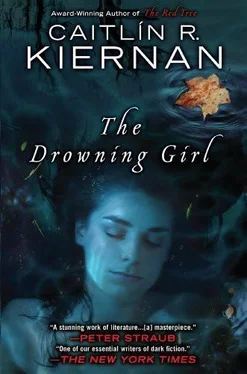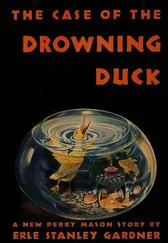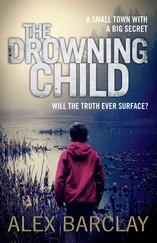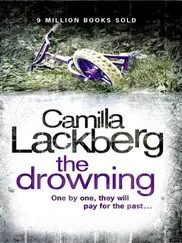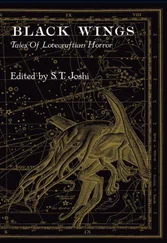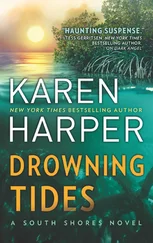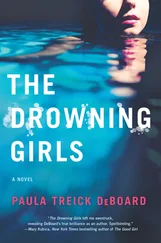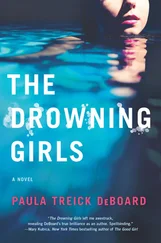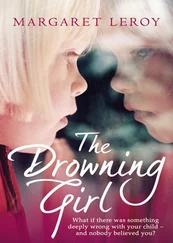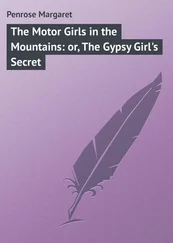Caitlín Kiernan - The Drowning Girl
Здесь есть возможность читать онлайн «Caitlín Kiernan - The Drowning Girl» весь текст электронной книги совершенно бесплатно (целиком полную версию без сокращений). В некоторых случаях можно слушать аудио, скачать через торрент в формате fb2 и присутствует краткое содержание. Год выпуска: 2012, ISBN: 2012, Издательство: Roc / New American Library, Жанр: Фэнтези, на английском языке. Описание произведения, (предисловие) а так же отзывы посетителей доступны на портале библиотеки ЛибКат.
- Название:The Drowning Girl
- Автор:
- Издательство:Roc / New American Library
- Жанр:
- Год:2012
- ISBN:978-0-451-46416-3
- Рейтинг книги:5 / 5. Голосов: 1
-
Избранное:Добавить в избранное
- Отзывы:
-
Ваша оценка:
- 100
- 1
- 2
- 3
- 4
- 5
The Drowning Girl: краткое содержание, описание и аннотация
Предлагаем к чтению аннотацию, описание, краткое содержание или предисловие (зависит от того, что написал сам автор книги «The Drowning Girl»). Если вы не нашли необходимую информацию о книге — напишите в комментариях, мы постараемся отыскать её.
The Drowning Girl — читать онлайн бесплатно полную книгу (весь текст) целиком
Ниже представлен текст книги, разбитый по страницам. Система сохранения места последней прочитанной страницы, позволяет с удобством читать онлайн бесплатно книгу «The Drowning Girl», без необходимости каждый раз заново искать на чём Вы остановились. Поставьте закладку, и сможете в любой момент перейти на страницу, на которой закончили чтение.
Интервал:
Закладка:
All this said, I feel as if I should write something factual, now. Telling this ghost story, I’m beginning to think of facts and truth like bricks and mortar, only I’m not sure which is which. The facts are probably the bricks, with truth being the mortar that holds it all together. I like the sound of that, so I’ll consider it a provisional truth. By the way, all this business about truth and fact, I can’t take credit for that. It comes from an essay in defense of fairy tales, written by Ursula K. Le Guin, titled “Why Are Americans Afraid of Dragons?” She might just as well have asked, “Why Are Americans Afraid of Ghosts, Werewolves, and Mermaids?” Anyway, she writes, “For fantasy is true, of course. It isn’t factual, but it is true. And that is precisely why many of them [Americans] are afraid of fantasy.” That’s another quotation I keep thumbtacked to the wall in the room where I paint, right next to the quote from Virginia Woolf’s suicide note.
Imp stared a moment at what she’d written, then added, “Stop stalling, India Morgan Phelps. It’s annoying.”
My favorite fairy tale when I was a child was “The Little Mermaid,” and I was especially fond of having it read aloud to me by Grandmother Caroline. She had a tattered old copy of Stories from Hans Christian Andersen , which had been printed in 1911, three years before she was born. She said her mother had purchased it at the Brattle Book Shop in Boston, while she was still pregnant with Caroline. My grandmother’s book of fairy tales is illustrated with twenty-eight beautiful watercolor paintings by a French artist named Edmund Dulac, who was born in 1882 and died in 1953. When Caroline killed herself, this book was one of the few things she left to me, and it’s yet another thing I keep in the room where I paint. The pages have turned yellow and brittle, and the illustrations are beginning to fade. I imagine they were much more vivid ninety-seven years ago, when my great-grandmother bought the book so that she’d have fairy tales to read to her child. Sure, I also liked some of the other stories, especially “The Snow Queen” and “The Wind’s Tale,” but none of them half as much as I liked “The Little Mermaid.” I’m sure Caroline must have known the story by heart, I asked to hear it so many times. But she always pretended she was actually reading it, and would pause to show me the illustrations by Edmund Dulac. I’ve seen two film adaptations of the story— Splash , which came out two years before I was born, and the animated Disney version, which was released when I was three, so I saw both on VHS. The way Disney changed the ending made me angry. Sure, Splash changed the ending, too, but it wasn’t filled with insipid music, and at least Daryl Hannah didn’t have to stop being a mermaid.
To me, the ending of the Disney film took a true (though not factual) story, and turned it into a lie.
My least favorite fairy tale when I was a child was “Little Red Riding Hood.” It wasn’t in the book my great-grandmother bought in Boston, of course, because it wasn’t written by Hans Christian Andersen, but by Charles Perrault (not to be confused with Albert Perrault). And it wasn’t published in 1911, but in 1697. That’s the first time it appeared in print, but the story existed in many forms long before Perrault put it down on paper. I have a file on “Little Red Riding Hood” with versions that go back as far as the eleventh century. Most people know the story the way that the Brothers Grimm wrote it, and most children are told that tamed and toned-down variant, in which a huntsman saves the girl from the wolf. But Caroline told me the story the way that it was published in Histoires ou contes du temps passé, avec des moralités: Contes de ma mère l’oye in 1697. Little Red Riding Hood and her grandmother are both eaten by the wolf, and no one comes to save her, and there’s no happy ending. This is, I think, the truer incarnation of the story, though, even as an adult, I really don’t care for either.
Anyway, even with the happy ending, the story terrified me. For one thing, I never pictured the wolf as a real wolf, but as something that walked upright on two legs, and looked a lot more like a man than a wolf. So, I suppose I saw it as a werewolf. When I was older, and read a book about wolves and saw a National Geographic documentary, I realized that the way I’d seen the wolf, in my mind’s eye, made the story truer, because men are much more dangerous than wolves. Especially if you’re a wolf, or a little girl.
My mother never read me fairy tales, and she never told them to me from memory. Rosemary Anne wasn’t a bad mother, she just didn’t do fairy tales.
Imp typed: “I think this is what you call prolegomena, what I’ve written so far, which is a word I’ve never before had a reason to use.” And then she got up and went to the bathroom, because she’d needed to pee since that part about Daryl Hannah. She also got a handful of Lorna Doones and an apple, because she’d skipped dinner again. Then she sat back down at the typewriter and typed, “The importance of fairy tales, and her love for ‘The Little Mermaid,’ as well as her aversion to ‘Little Red Riding Hood,’ is very much at the heart of the ghost story she’s writing.”
Which means that wasn’t a digression.
A couple of months after Abalyn moved in with me, we went to an exhibit at the Bell Gallery at Brown. Going was her idea, not mine. The exhibit, which was called The Voyeur of Utter Destruction (in Hindsight), was a retrospective of the work of an artist who’d died in a motorcycle accident a few years before, a man who called himself Albert Perrault (though that wasn’t the name he was given at birth). I’d heard of him, but not much. Abalyn had read an article about Perrault somewhere online, and I went because she wanted to go. The exhibit consisted of an assortment of oil paintings, sculptures, and mixed-media pieces, almost all of it inspired, in part, by fairy tales, and mostly by “Little Red Riding Hood.” Had I known that beforehand, I might have let Abalyn go alone. I probably would have insisted. As it was, I held her hand almost the whole time we were in the gallery.
We signed the guest book at a table near the door, and Abalyn took a copy of a glossy brochure about the exhibit. The first painting had a Latin name, Fecunda ratis . The canvas was executed mostly in shades of gray, though there were a few highlights of green and alabaster, and a single striking crimson smudge floating near the center. A card on the wall beside the painting explained that Perrault borrowed the title from a book by an eleventh-century pedagogue named Egbert of Liège, a book that had included “De puella a lupellis seruata,” an account of a lost girl found living with a pack of wolves. In the story, she’s wearing a red wool tunic, given to her by her grandfather on the day of her baptism. Someone spots the red tunic, and she’s rescued, which I suppose makes it a morality tale. Baptize your children, or they’ll go live with wolves.
I didn’t like the painting. It made me uncomfortable. And not only because it went straight back to my old hang-up about “Little Red Riding Hood.” There was something awful about it, something that made it hard for me to look directly at for more than a few seconds at a time. I suppose this should have impressed me, that the artist had so effectively managed to imbue his work with such a sense of dread. My impression of it was formed piecemeal. I’d glance at the painting, then turn away again. I don’t think Abalyn noticed I was doing this; I’m not sure she had any idea how the exhibit was affecting me until I asked if we could please leave, which was about twenty minutes and several paintings and sculptures later.
Читать дальшеИнтервал:
Закладка:
Похожие книги на «The Drowning Girl»
Представляем Вашему вниманию похожие книги на «The Drowning Girl» списком для выбора. Мы отобрали схожую по названию и смыслу литературу в надежде предоставить читателям больше вариантов отыскать новые, интересные, ещё непрочитанные произведения.
Обсуждение, отзывы о книге «The Drowning Girl» и просто собственные мнения читателей. Оставьте ваши комментарии, напишите, что Вы думаете о произведении, его смысле или главных героях. Укажите что конкретно понравилось, а что нет, и почему Вы так считаете.
